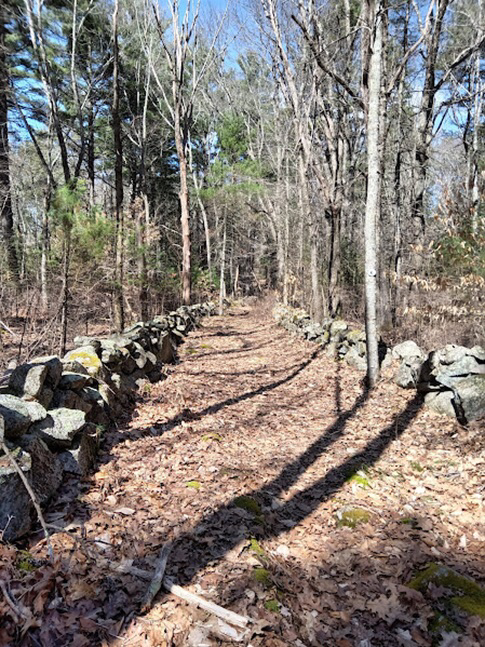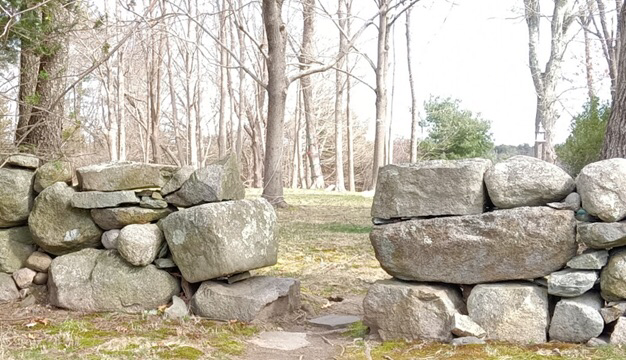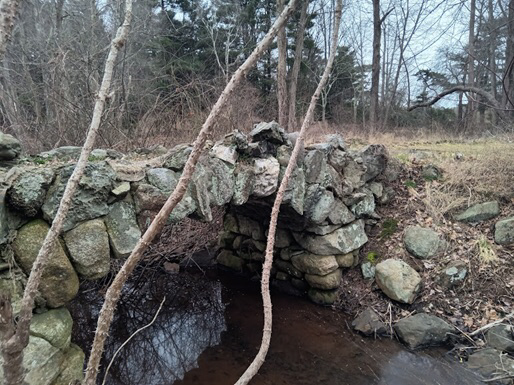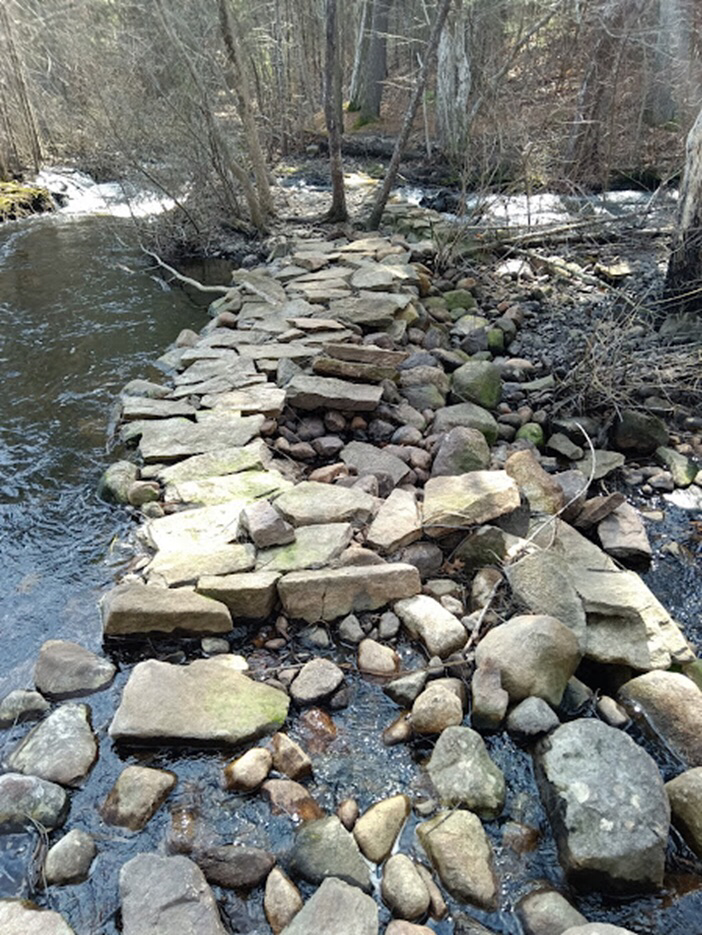|
Stone walls have caught my interest. Little in this world is more permanent than stone, particularly glacial boulders. Early settlers in Easton built with stone- walls, foundations, dams, bridges, monuments to the dead- and more. I’ve been wandering about and here are a few of the things that have caught my eye. If you walk the Rockland Trail at Borderland you’ll see segments of stone walls snaking through the woods on both sides. At one time these woods would have been fields. Stone walls in the woods today indicate that the area was settled at some point, usually pre-Civil War. Most wall building in New England occurred between 1775 and 1825. Families living on or near Rockland Street between 1750 and 1886 were the Bennett, Dean, Littlefield, Buck, and Selee families. Interestingly, much of Easton was cleared by 1830. According to an 1830 map in Easton’s Past as Shown Through Maps, (EHS, 1988) more land was cleared in 1830 than is cleared today. This meant lots of farming. The photograph below is of a segment of the trail closer to Rockland Street framed on both sides by stone. It appears to be an old road. Perhaps a farm road? Quite impressive at any rate. Section of the Rockland Trail at Borderland State Park. Most New England walls were ‘tossed’ walls, quickly created of unshaped field stone. ‘Laid’ walls were built with more care. Walls near homes tended to be more carefully or artfully laid. The wall below belongs to the Red House (Hayward House) on old Foundry Street. Wall on Foundry Street. The photo below shows a small bridge at the Governor Ames Estate which is now managed by the Trustees. The original house was built in 1862 at 35 Oliver Street and demolished in 1937 by the children of Governor Oliver Ames after both he and his wife Anna died. Bridge at Governor Ames. The bridge was built to be decorative on a beautiful, landscaped estate. Earlier walls and bridges were built for function. A dam of rocks and stones on Mulberry Brook. Wheaton Farm property. No idea of dating on the dam but beautiful with spring waters overflowing.
Fortunately for me there is much more to explore, and spring is on its way. Stones are mute teachers; they silence the observer, and the most valuable lesson we learn from them we cannot communicate. Johann Wolfgang von Goethe Anne Wooster Drury [email protected] Some facts taken from the book Stone by Stone, The Magnificent History of New England’s Stone Walls, Robert M. Thorson, 2002
0 Comments
Your comment will be posted after it is approved.
Leave a Reply. |
Author
Anne Wooster Drury Archives
June 2024
Categories |
Easton Historical Society and Museum
PO Box 3
80 Mechanic Street
North Easton, MA 02356
Tel: 508-238-7774
[email protected]




